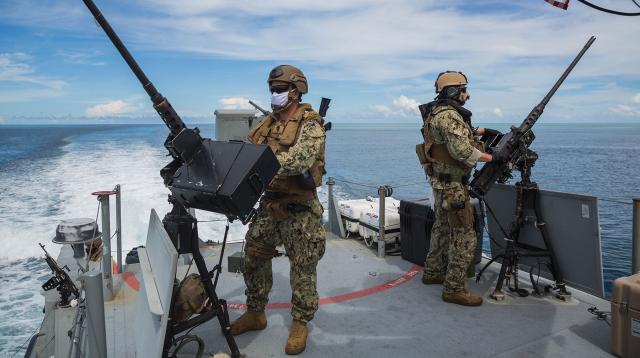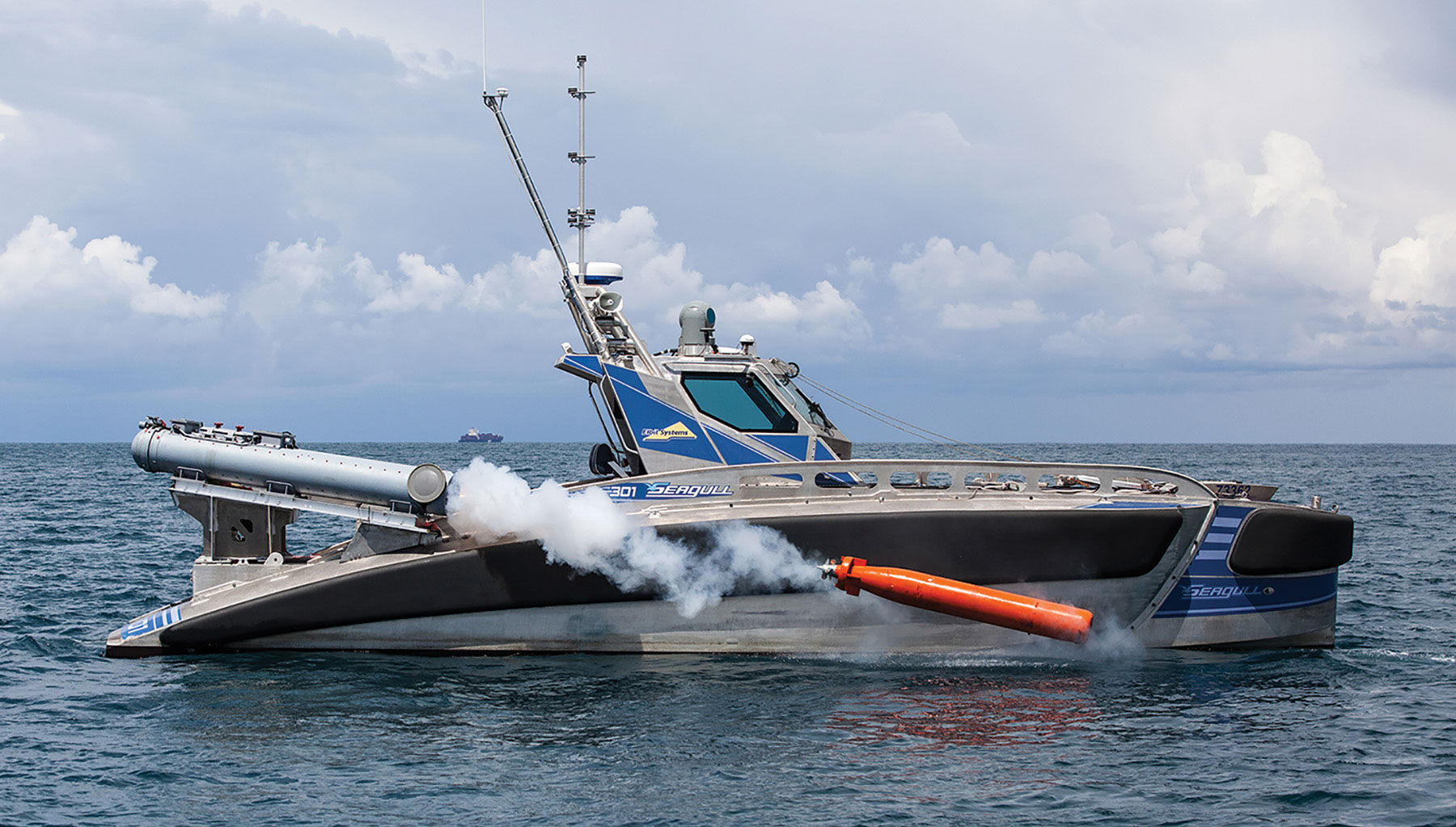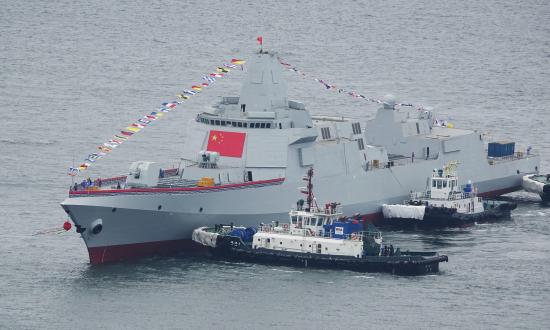UPDATE [12 April 2021, 2:56 p.m.]: On April 12, Navy Expeditionary Combat Command told Proceedings that the 5 February general administration instructions(GENADMIN) ordering the inactivation of the Mk VI boats "has since been cancelled, which stops the inactivation of the Mk VI patrol boats this year." NECC would not speculate on the future of the Mk VI program, but for now, the versatile small boats will remain a part of the fleet.
—Brian O'Rourke
The Navy’s newest boats afloat, the Mk VI patrol boats from SAFE Boats International, could become its most recent budget casualty as soon as this fall, if the Navy gets its way.
The Mk VIs entered service in 2016 and have seen duty in the Persian Gulf and Guam and on the U.S. West Coast. They originally were conceived as special operations craft, though larger and more heavily armed than the Mk Vs. But a 5 February Navy general administration instruction indicates the craft will be deactivated not later than the end of the federal government’s fiscal year, 30 September 2021. USNI News attributed the patrol boats’ end to maintenance issues, saying sources criticized the engineering plant’s reliability. But The War Zone, which first reported the Mk VI program termination, says sources blamed those issues on poor training rather than design issues.
According to USNI News, the Navy decommissioned three of its Cyclone-class patrol craft (PCs) in mid-February, with a plan to replace the PCs with a combination of littoral combat ships (LCSs) and Coast Guard fast response cutters (FRCs). The Cyclones, which had a build cost in the range of $25 million (in 1991 dollars), have been facing extinction for years. In the early 2000s, the Coast Guard received three on loan from the Navy, but the service returned them in 2011 as hull fatigue became an issue. The Mk VI costs in the neighborhood of $10 million per boat (sources vary from $7 to $15 million), while the Coast Guard’s new FRCs cost around $70 million each. An LCS costs some $600 million.
Where this leaves the future of Navy small craft is anyone’s guess. For one thing, smaller boats offer a chance for early command at the lieutenant or lieutenant commander level. For another, Proceedings editors have noted that, were the Navy and Coast Guard to buy enough Mk VIs to meet all the uses for which Proceedings authors have proposed them, the services might end up with hundreds of the 72-ton, 45-knot boats. (See, for example, “Going to War with China? Dust Off Corbett!” pp. 56–61, January 2020; “Considerations for a Future Patrol Boat,” online, April 2020; and “Fifty Tons of Fury: Bring Back the Patrol Torpedo Boat,” online, September 2018.)
It is possible that the Department of Defense, President Joe Biden, or Congress will still order the Navy to change course and retain (or expand) the Mk VI fleet. But for now, it looks like fair winds and following seas to the patrol boats.
Hagåtña Fury
The second half of February saw Marines and sailors working to refine expeditionary advanced base operations (EABO) during Exercise Hagåtña Fury (named for the capital village in Guam).
Combat Logistics Regiment 3 sailors worked with Marines from the 3d Marine Division and 1st Marine Aircraft Wing from 18 February to 1 March, on Guam and on the islands of Ukibaru and Iejima, in Okinawa, Japan—about 1,400 miles apart—with some support exercised from Hawaii.
The Marines from 3d Battalion, 8th Marine Regiment, and 3d Battalion, 3d Marine Regiment, “seized” the Japanese islands in an aerial assault. Follow-on Marines and sailors from 3d Landing Support Battalion, 3d Transportation Support Battalion, Combat Logistics Battalion 4, and Combat Logistics Battalion 3 established forward arming and refueling points. Onshore units also practiced vertical replenishment with Carrier Strike Group 9 (the Theodore Roosevelt Strike Group).
An ongoing concern across the Sea Services is how they will fight in a “communications degraded or denied” environment, in which GPS may be unavailable (see “Regaining the Strategic GPS Advantage,” pp. 66–69) and emissions control may be the difference between life and death (see “Embracing the Dark Battle,” pp. 26–31, April 2017). According to the Marine Corps, the purpose of the exercise was to test the Navy and Marine Corps’ ability to “conduct distributed command and control of forces providing EABO sustainment across INDOPACOM via a robust communications network.”
The Navy and Marine Corps did not announce any practice of emissions control during the exercise, however. But whether any occurred or not, the working out of EABO is still in relatively early stages.
—Brian O’Rourke
Antisubmarine USVs
Israeli company Elbit Systems is continuing to develop its unmanned surface vehicles (USVs). In January, the company announced it had a contract for an unspecified number of its Seagull USVs–in a mine countermeasures configuration–for the navy "of a country in [the] Asia-Pacific" region. The company says its boats are also capable of autonomous operation in antisubmarine warfare (ASW).
In the ASW role, the boat carries a dipping sonar and can launch Italian manufacturer Leonardo's A244/S Mod.3 lightweight torpedo from stern-mounted torpedo tubes. The A244/S is a 324-mm diameter torpedo similar in size to the U.S. Navy's Mk 46. The 12-meter-long Seagull demonstrated the torpedo-launch capability off Haifa, Israel, in late 2018.
The Belgian Navy and Elbit Systems have conducted trials of the Seagull in the North Sea.









